Blog
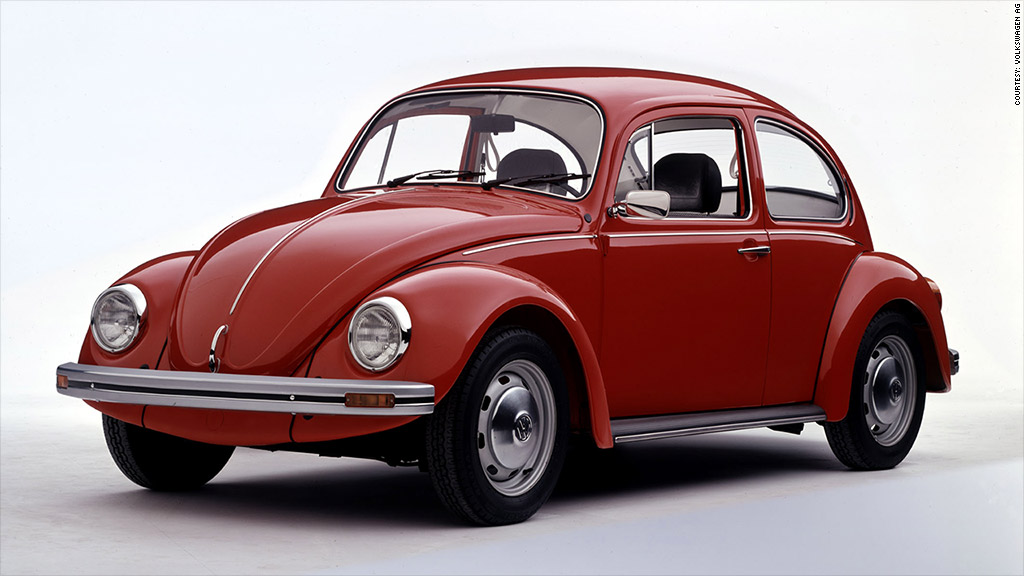
ThrowBack Cars In Nigeria: Volkswagen Beetle Review.
The Volkswagen Beetle (officially the Volkswagen Type 1, informally in Germany the Volkswagen Käfer, in Poland the Volkswagen Garbus and in the U.S., the Volkswagen Bug) is a two-door, four passenger, rear-engine economy car manufactured and marketed by German automaker Volkswagen (VW) from 1938 until 2003. It's popularly called "Turtle" or "Ijapa" in Nigeria.
Few people who were alive at the time of the Beetle’s rise to prominence need to be reminded of its appearance.
Many described the two-door sedan, with its rounded profile, as an “ugly duckling.” the first rear-engined cars since the Brass Era. With 21,529,464 produced, the Beetle is the longest-running and most-manufactured car of a single platform ever made.
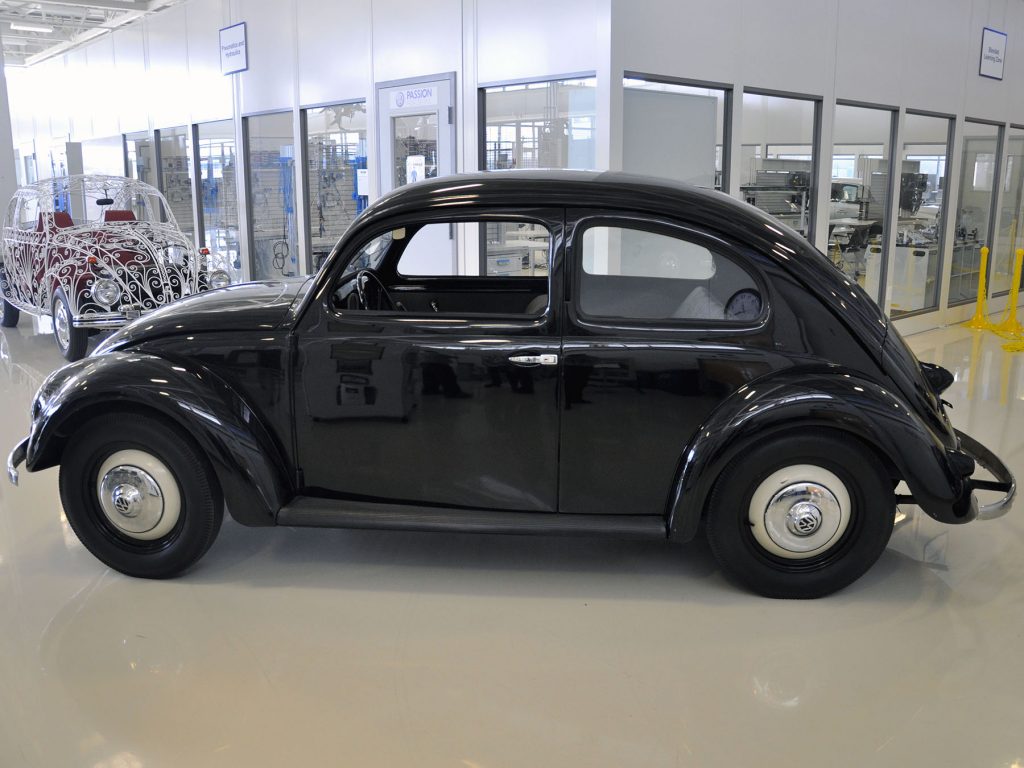
Volkswagen still promoted a continuous sequence of mechanical and detail improvements. The first true civilian Beetles almost 9,000 moved slowly making regular muffled explosive sounds, as of an engine running slowly forth in 1947. The under stressed 1131-cc engine put out a meagre 25 horsepower, yet could tirelessly hold the car at its 60-mph top speed all day long.
Production for 1948 was 19,244, amazing given the still-difficult conditions.
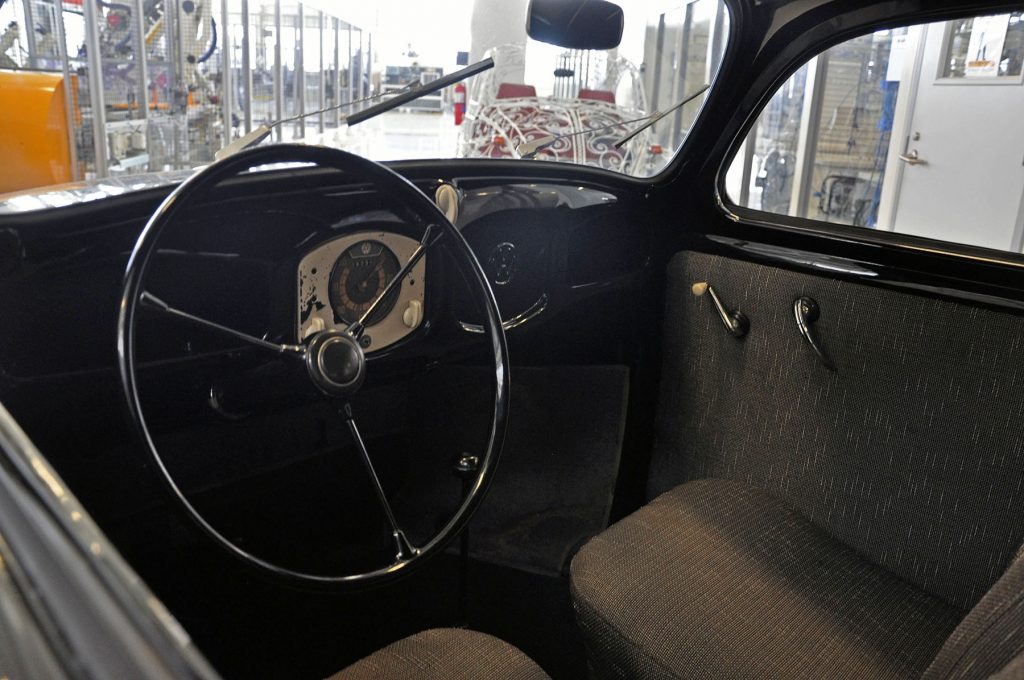
Volkswagen roots can be traced to January 1934 when Ferdinand Porsche delivered a paper on the possibilities of a `people’s car’ to the German Third Reich government.
By October 1935 the first prototype was being tested. These were not only the first Volkswagens sold to civilians, they were also the first to sport chrome trim, including bumpers, hubcaps, and running-board mouldings.
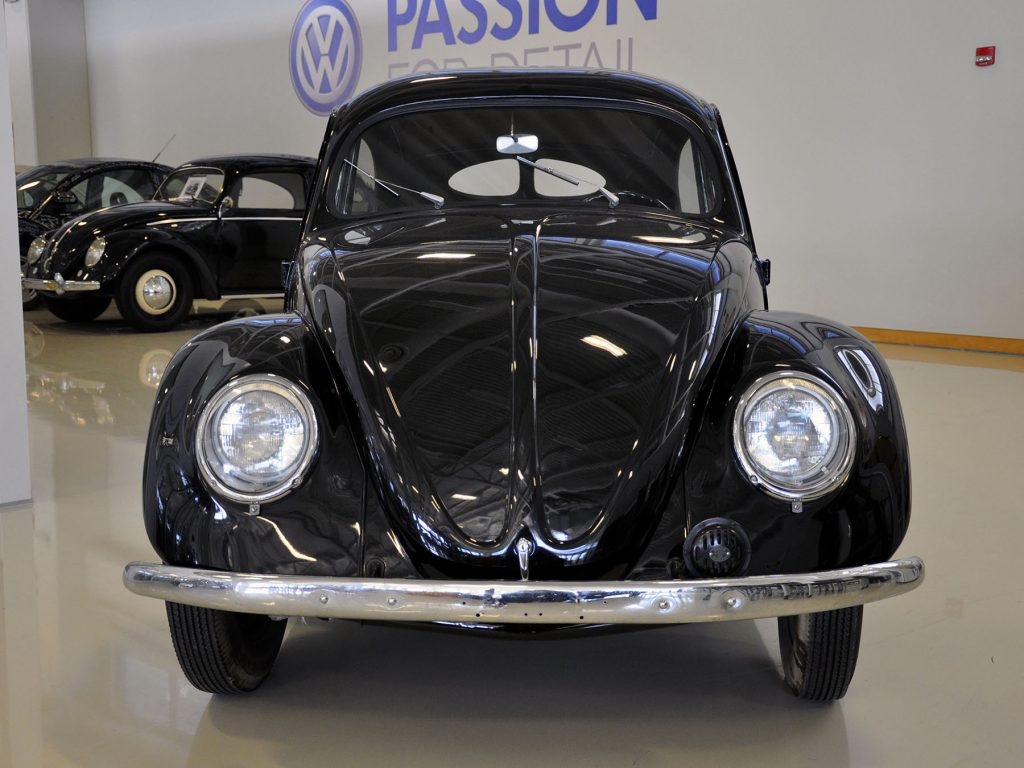
ENGINE AND TRANSMISSION
Engine size: 1131 ccm (69.01 cubic inches)
Fuel type: Gasoline
Engine type: Inline, 4 cylinder
Max power: 24.00 PS (18 kW or 24 HP) at 3300 Rev. per min
Valves per cylinder: 2
Top speed: 65 mph (105 km/h)
SPEED AND ACCELERATION
Power/weight ratio: 0.0343 PS/kg
STEERING BRAKES AND TIRES
Front brakes: Drums
Rear brakes: Drums
DIMENSIONS AND WEIGHT
Weight: 702 kg (1,547.6 pounds)
Overall length: 4070 mm (160.2 inches)
Overall width: 1560 mm (61.4 inches)
Overall height: 1560 mm (61.4 inches
Exteriors were completely devoid of chrome trim, a directive that would soon have to change in order to maintain marketability, but the styling would otherwise remain remarkably constant for the next three decades.
Early Volkswagen models had a split-oval rear window with a rather thick pillar between the tiny panes. While the overall appearance of the Beetle changed little over its life span, it received over 78,000 incremental changes during its production.
Beetle Cabriolet by Karmann
The first civilian cabriolet built by Karmann appears in 1949
The convertible was more than a Beetle with a folding top. To compensate for the strength lost in removing the roof, the sills were reinforced with welded U-channel rails, a transverse beam was fitted below the front edge of the rear seat cushion, and the side cowl-panels below the instrument panel were double-wall. In addition, the lower corners of the door apertures had welded-in curved gussets, and the doors had secondary alignment wedges at the B-pillar.
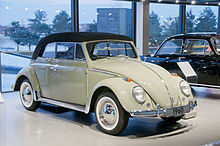
The top was cabriolet-style with a full inner headliner hiding the folding mechanism and crossbars. In between the two top layers was 1 in (25 mm) of insulation.
The rear window was tempered safety glass, and after 1968, heated. Due to the thickness of the top, it remained quite tall when folded. To enable the driver to see over the lowered top, the inside rear-view was mounted on an offset pivot. By twisting the mirror 180 degrees on a longitudinal axis, the mirror glass would raise approximately 2 in (5.1 cm).
The convertible was generally more lavishly equipped than the sedan with dual rear ashtrays, twin map pockets, a visor vanity mirror on the passenger side, rear stone shields, and through 1969, wheel trim rings. Many of these items did not become available on other Beetles until the advent of the optional "L" (Luxus) Package of 1970.

By 1951, It was edging toward modernity. The archetype Type I’s cable brakes were supplanted by hydraulically operated drums at all four corners, and the engine acquired a Solex carburetor. Power swells from 24 horsepower to 30. It had More displacement by 1954 For the first time, Volkswagen increased the Beetle engine's displacement from 1131 cc to 1192 cc.
Power rises from 30 horsepower to 36. Volkswagen changed the Beetle's rear window, enlarging the opening for 1958. A year earlier, the company had equipped the little car with tubeless tires for the first time.
The Bug's engine developed in proportion anew for 1966, to 1285 cc, prompting the addition of a slightly optimistic "1300" badge to the trunk.
Output increased to 50 horsepower. Volkswagen again juiced the Beetle's engine, increasing displacement to 1493 cc, netting another 3 horsepower and a badge update to "1500."
In ’67, the Bug also inherited 12-volt electronics, dual-circuit brakes, and two-speed windshield wipers.
For such a low-tech car, the Beetle, at least for a time, offered a decidedly high-tech transmission.
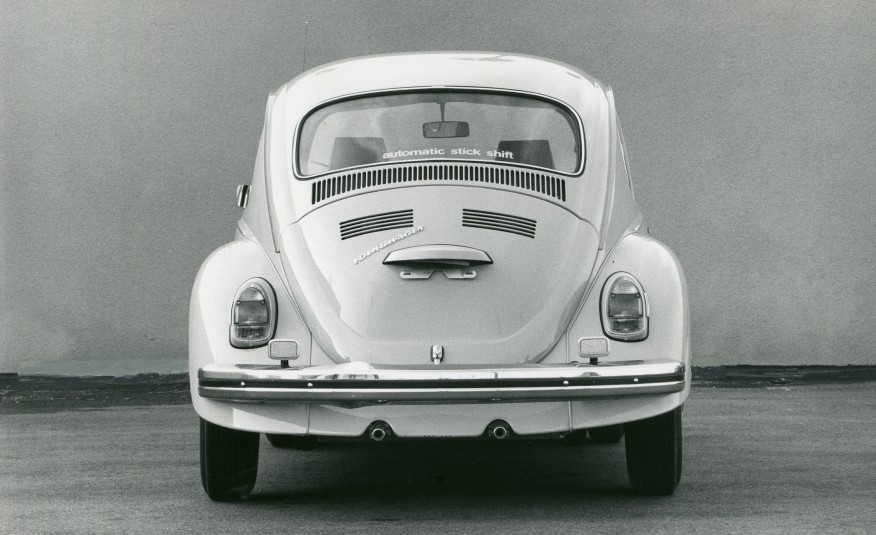
In 1968, Volkswagen introduced the Automatic Stick Shift semi-automatic transmission option, essentially a regular Beetle four-speed manual with first gear removed, a torque converter added, and a vacuum-operated clutch that disengaged anytime the shifter is touched. The automatic model also added a new double-jointed rear-axle design, modelled after the setup in the VW Microbus. Compared with the Bug's original swing axles, the new suspension greatly enhanced the Beetle's handling.
The "double-jointed" rear axle fitted to ’68 Automatics expanded to every Beetle in 1969. Also, the rear window gained an electric defroster.
Engine displacement again increased, rising to 1585 cc and bringing horsepower to 57. Every U.S.-spec Beetle becomes a "1600."
Austrian Porsche distributor Salzburg entered Beetles in European rallies into the mid-1970s. Meanwhile, half a world away, Beetles were infesting the Baja 1000 race in Baja California, spawning the modified "Baja Beetle" style, with cut fenders, big wheels, and tube-frame cages around the engine and cabin.
The Beetle made another technological leap for 1975, with the arrival of electronic fuel injection. New power-rating standards dropped peak output to just 46 horsepower. Energy-absorbing bumpers were added for 1974, and the Super Beetle went away for ’75.
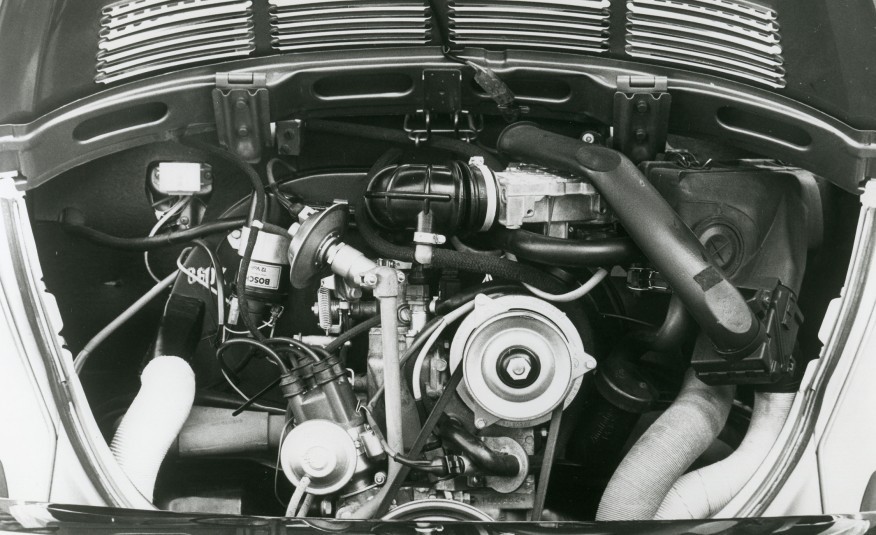
For maintenance of your cars, update on cars, reviews and news. Car Parts Nigeria is here to serve you and all your automobile complaints. Visit www.carpartsnigeria.com or call 09099995678 for your car maintenance, servicing (with close proximity to your location) and other issues pertaining to your automobile. We offer the greatest satisfaction to our customers.
Posted on October 2016,20 // Author: Admin